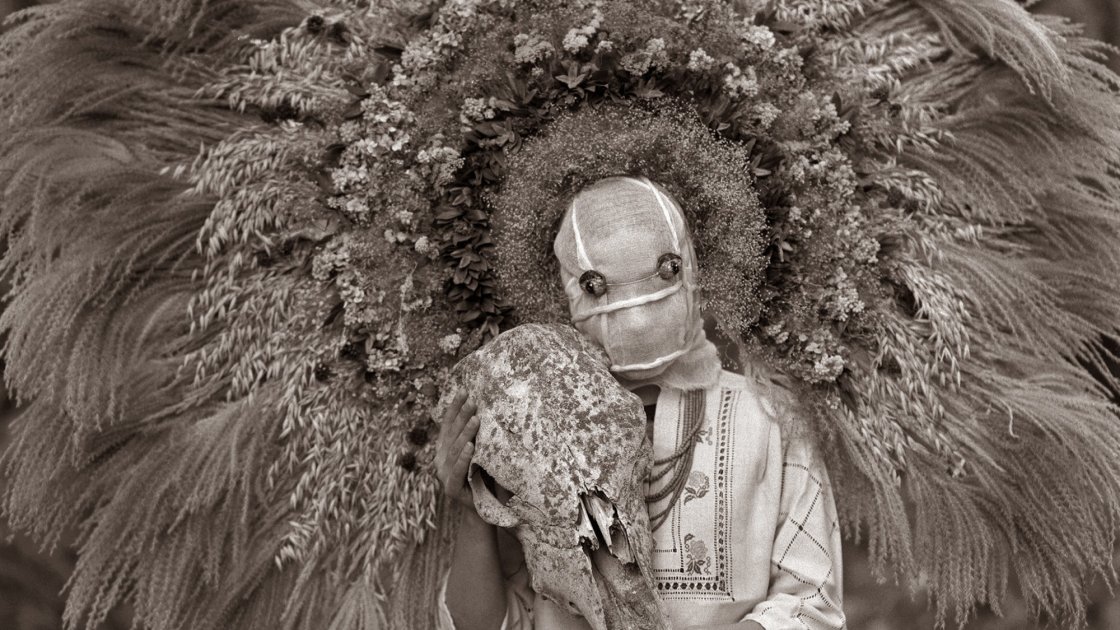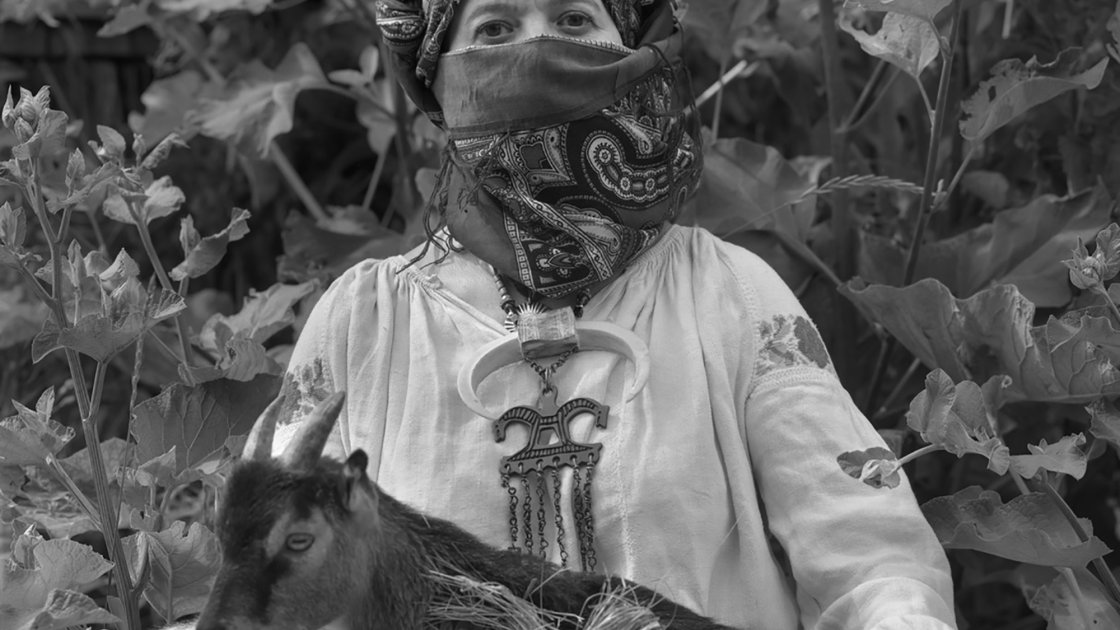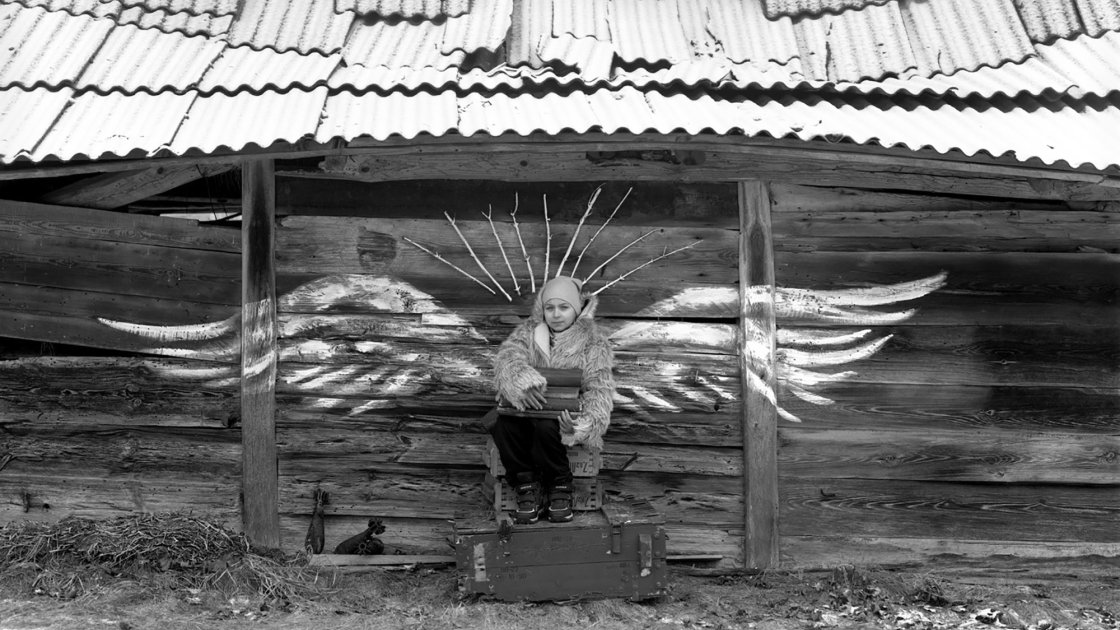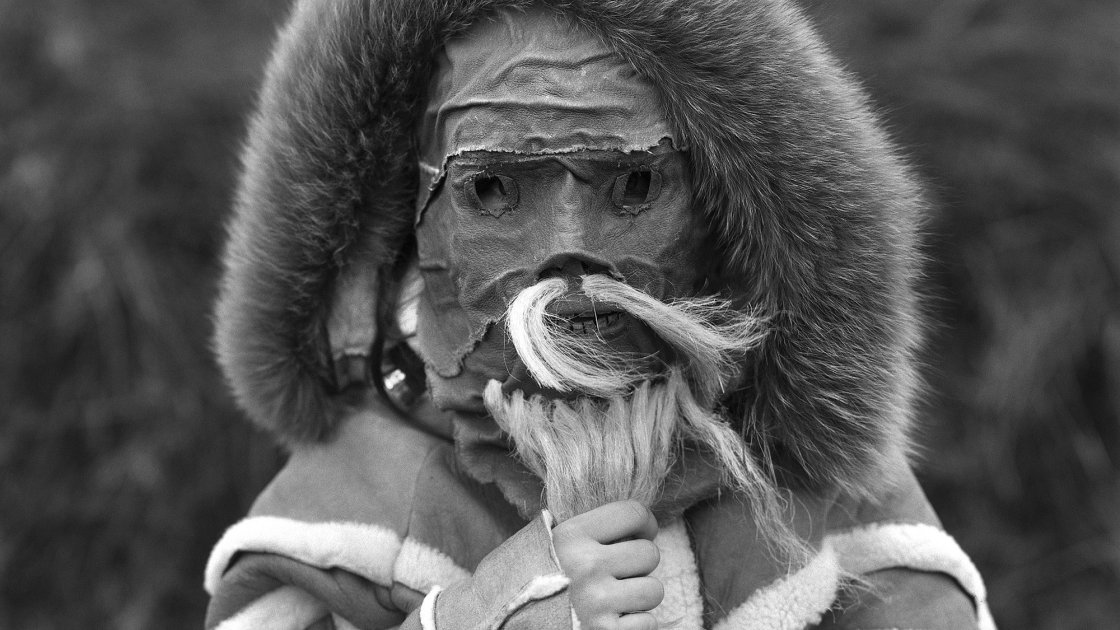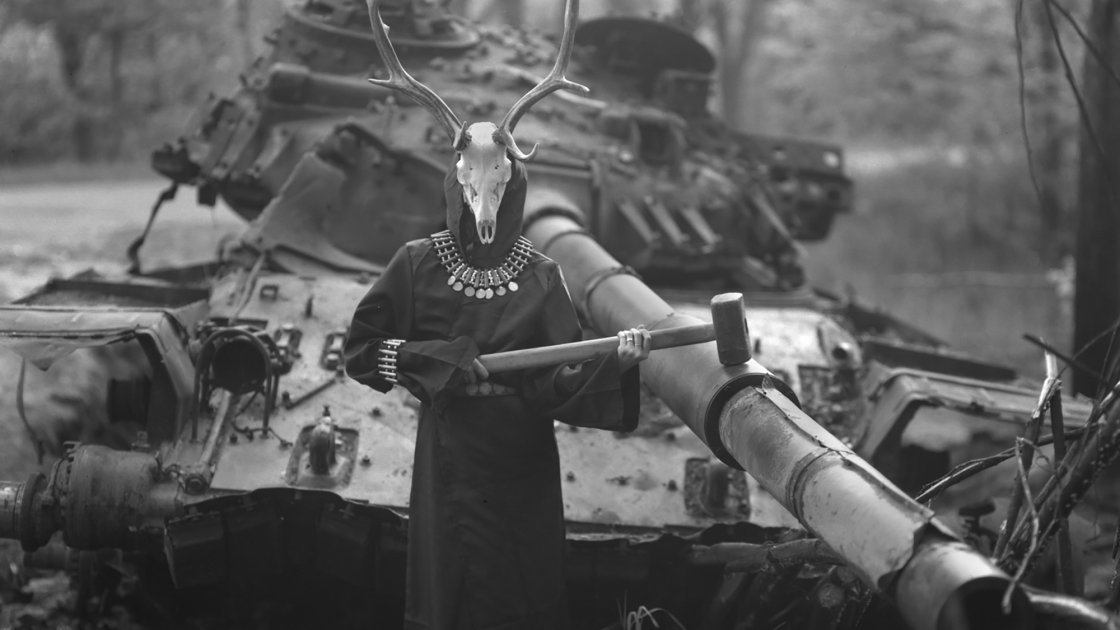The magic of Polissia
Slowing down time, by Andrii Kotliarchuk
From 24 February to 9 March 2025
Eleven years of war. Three years of invasion. Ukraine is fighting for its freedom to preserve its culture and identity. The first Russian bombs fell on Ukrainian soil in 2014. On 24 February 2022, a full-scale war began. Ukraine continues to confront the aggressor country, defending its people and its free land as it fights for faith, truth and independence. We thank everyone who supports us.
Art is the universal language of the planet, and as long as culture exists, a nation exists. But today more than 41 museums in Ukraine—the largest country in Europe, covering an area of 603,548 sq km—have been damaged, occupied or destroyed by Russia. In our belief in the victory of light over darkness, we propose to delve into the mystical world of Ukrainian history, where there is genuine beauty of nature, intertwined with traditions and life without war. A world where hope, faith and love exist.
Polissia is an enigmatic region in northern Ukraine. A land of relict forests, ancient beliefs and sacred Gothic architecture. A natural museum of our time and a unique world where the past is intertwined with the present, keeping traditions alive.
Andrii Kotliarchuk has been travelling around Polissia with an analogue camera for more than a decade, creating images that show us an archaic, mystical world, bastion of an ancient civilisation that dwells in the forests of Polissia. The author uses large-format black and white film to take his pictures and an Emil Busch Portait Aplanat 280mm lens made in the late 19th century.


Andrii's encounter with the pagans of Polissia was accidental. While exploring the tributaries of the River Teteriv in search of photogenic landscapes, he came across an old military map showing a stream with a historical name and decided to explore it.
The traditions inherent to Polissia are very different from the Cossack and steppe cultures that dominate modern Ukrainian identity. The region is home to a people untouched by globalisation, who have preserved their own rituals and dwell in the unexplored forests of that region.
In the late fourth century BCE, the Eastern Slavs, then known as the Antes, were pagans and lived in isolated villages. The prince was usually elected by the people, and already in those distant days there were city-republics with a democratic form of government. These cities lost their independence in the fifteenth century, falling under the rule of the Grand Dukes of Moscow. At that time, the main occupation of the Slavs was agriculture and trade. The route that crossed the Baltic Sea, River Neva, Lake Ladoga, Lake Ilmen, River Dnieper and Black Sea formed a vital channel for trade between the Scandinavians and the Byzantine Greeks.
Prince Oleg, who ruled the country during the minority of Rurik's son Igor, seized Kyiv and turned it into the capital of the new Slavic state, Kyivan Rus. At the beginning of the tenth century, separate Slavic states—Novgorod, Kyiv and others—united under the rule of Prince Oleg, who also governed the Slavic tribes. This unification gave rise to the name Rus. The city of Kyiv became the centre of Rus, which is called the ‘mother of Russian cities’ in chronicles.
Rus was founded in 988, and since then the Kyivan state has flourished. The roots of Ukrainian culture date back thousands of years and live on to this day.
The philosopher Leo Frobenius believed that every culture has a ‘paideuma’, a soul. The soul of northern Ukraine is hidden in Polissia. The Ukrainian philosopher Serhiy Chaplygin wrote about this: ‘Mircea Eliade, studying traditional societies, came to the conclusion that our modern society is materialistic only on the surface. Somewhere, in the very depths of the human psyche, the most ancient archetypes are hidden and the unchanging “soul code” is recorded, which in the process of historical development acquires the features of a particular religion or tradition.’
Here we present the soul and history of Ukrainian authenticity, which still exists in the north of Ukraine and is called Polissia. ‘The longer you look, the more you see. An encrypted message from distant stars. They show us the slow flow of history and time. The past flows smoothly into the present. This is a real mystery of Polissia: a game without beginning or end.’
Project curated by Viktoriia Ivankova.
Andrii Kotliarchuk
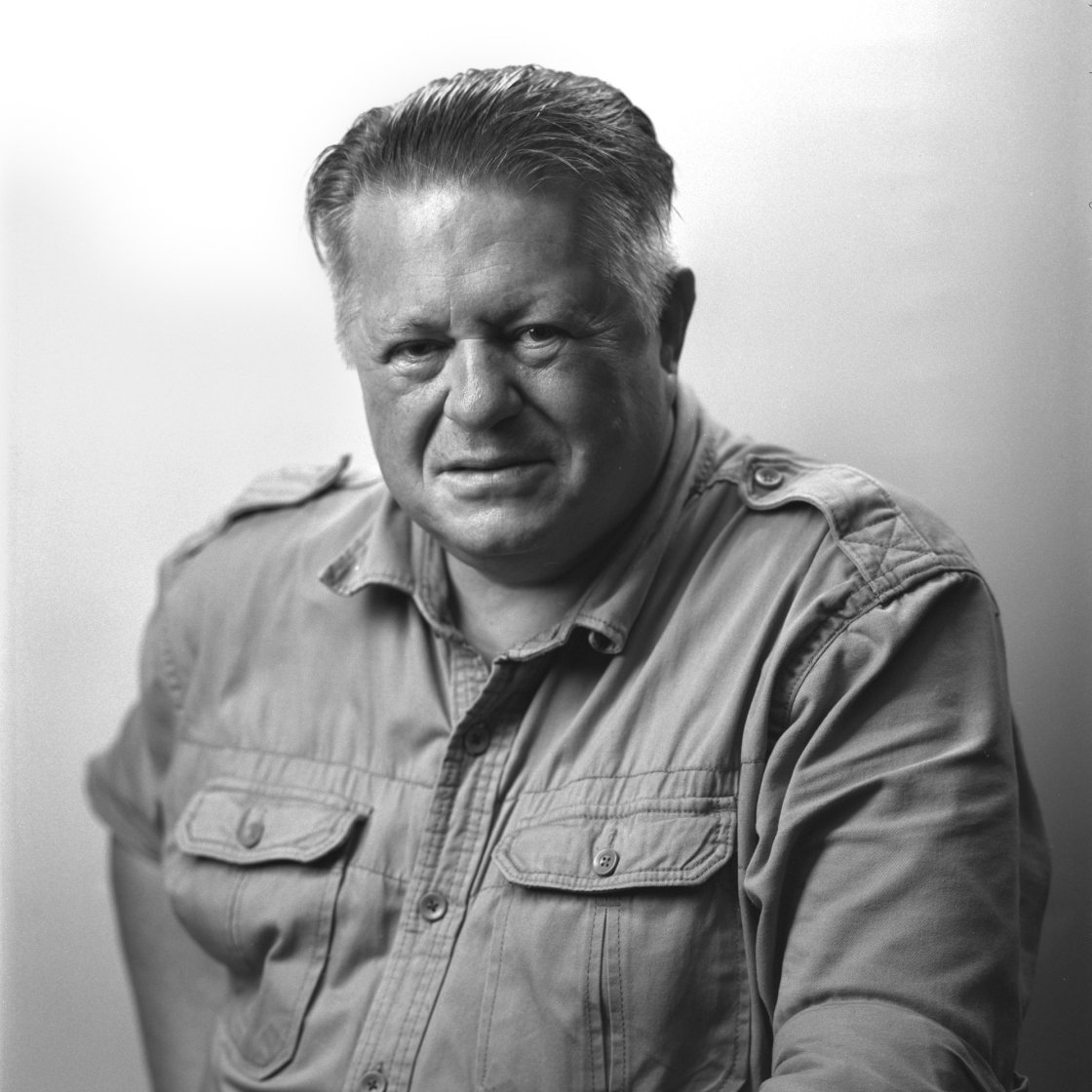
Andrii Kotliarchuk was born in Kyiv, Ukraine, in 1966. He graduated from the Taras Shevchenko National University of Kyiv in 1993 and from the National Academy of Culture and Arts Management (NACAM), Faculty of Art History, in 2006. He is currently a PhD student in the Department of Art History at the NACAM.
Kotliarchuk took part in the defence of Mariupol in 2014–2015 as a member of St Mary's Volunteer Battalion. He was awarded the honorary insignias ‘For the Defence of Mariupol’ and ‘Knight's Cross of the Volunteer’, and the St Mary's Volunteer Battalion medal for his participation in the anti-terrorist operation. In February–April 2022, he took part in the defence of Kyiv as a member of the Bratstvo Volunteer Battalion.
Andrii Kotliarchuk has held more than forty exhibitions of his photographs in Ukraine and abroad. In the past five years, he has organised and taken part in numerous international and national exhibitions and festivals, including:
- The Ark, Vienna, Alte Schieberkammer, October 2024.
- Bastion. Artyści ukraińscy o wojnie, Poland, Muzeum Śląskie, September 2024.
- Liberated Kyiv Region, Kyiv, IPSM, September 2024.
- Denial of Reality, Kyiv, National Academy of Arts of Ukraine, August 2024.
- Tattoo Warrior, Kyiv, I. P. Kavaleridze Museum and Workshop, August 2024.
- ARTART, Kyiv, Institute of Contemporary Art Problems, May 2024.
- Polissia Mysteries, Kyiv, CSM Bilyi Svit, April 2024.
- The Sense of Time, Kyiv, Mytets Gallery of the National Union of Artists of Ukraine, February 2024.
- Third International Ukrainian Art Photography-2023 Biennale, Kyiv, Taras Shevchenko National Museum, December 2023.
- Exhibition of Ukrainian photographers at the Musée Atelier Malicot, France, February 2022.
- International Parade of Projects Festival of Art Photography, Kyiv, Taras Shevchenko National Museum, September 2018.
- Second Ukrainian Art Photography Biennale, Kyiv, National Museum Kyiv Art Gallery, February 2018.
- First Ukrainian Art Photography Biennale, Kyiv, M-17 Centre for Contemporary Art, November 2015.
His art projects include:
- Anthology of Senses: The Ark, Lviv, Andrei Sheptytsky National Museum, November 2023.
- Experience of Reality, Kyiv, National Museum of Literature of Ukraine, September 2023.
- A Sense of the Present, Kyiv, National Museum Kyiv Art Gallery, May 2023.
- Reflection, Kyiv, Taras Shevchenko National museum, March 2023.
- The Ark, Kyiv, Khlibnya Gallery, October 2022.
- Volunteers, Kyiv, National Museum Kyiv Art Gallery, April 2022.
- Life in Times of Change, Kyiv, National Museum Kyiv Art Gallery, 2022.
- Participation in OFAR - Open Format Art Residence, Ukraine, Slavutych, September 2021.
- Selected Works 1996–2019, Kyiv, Transformer Cultural and Media Space, February 2021.
- Beauty Will Save, Kyiv, Chocolate House Art Centre, December 2020.
- Habitat: Manifesto 2020, Kyiv, Lavra Art Gallery, March 2020.
- Philosophy of Portraiture, Kyiv, National Museum Kyiv Art Gallery, February 2020.
- Polissia: Transformation of the Image, Kyiv, Chocolate House Art Centre, December 2019.
- The Invisible Next Door, Kyiv, Portal 11 Gallery, August 2019.
- Metamodern: The Search for Perfection, Kyiv, IEC of the Museum of Kyiv History, August 2019.
- Landscape: Contemporary View, Kyiv, M-17 Centre for Contemporary Art, June 2016.
- Volunteers, Khmelnytskyi, Studio Museum of Photographic Art, December 2015.
- The Best Photos of Ukrainian Photographers, Kyiv, Vernadsky National Library of Ukraine, summer 2013.
He also participated in the following charity auctions:
- Art for Life Annual Charity Auction: 2016.
- Golden’s Auction House (Post-war & contemporary art): 2014.
- Euro Art Auction House: 2013.
He is the author of two photo albums:
- Liberated Kyiv Region, Mystetstvo publishing house, 2024.
- Volunteers: The Age of Heroes, Mystetstvo publishing house, 2019.

